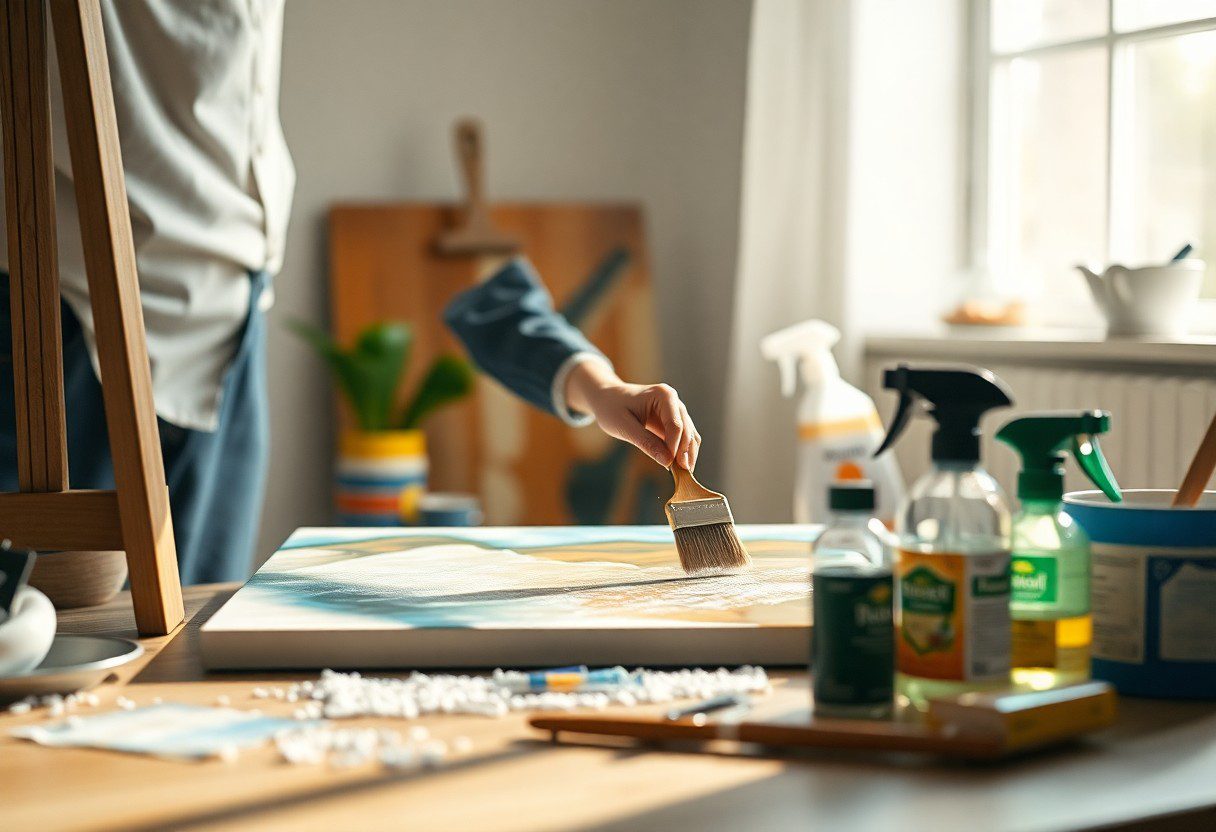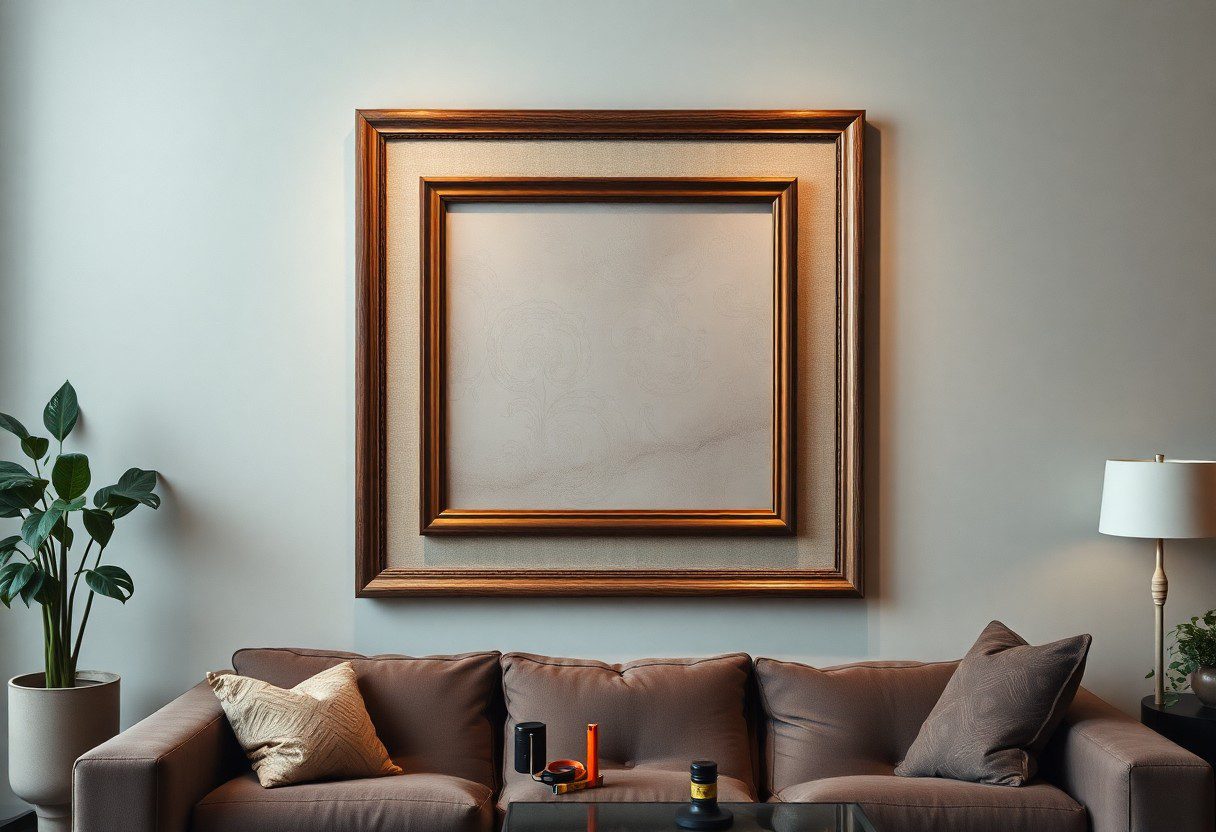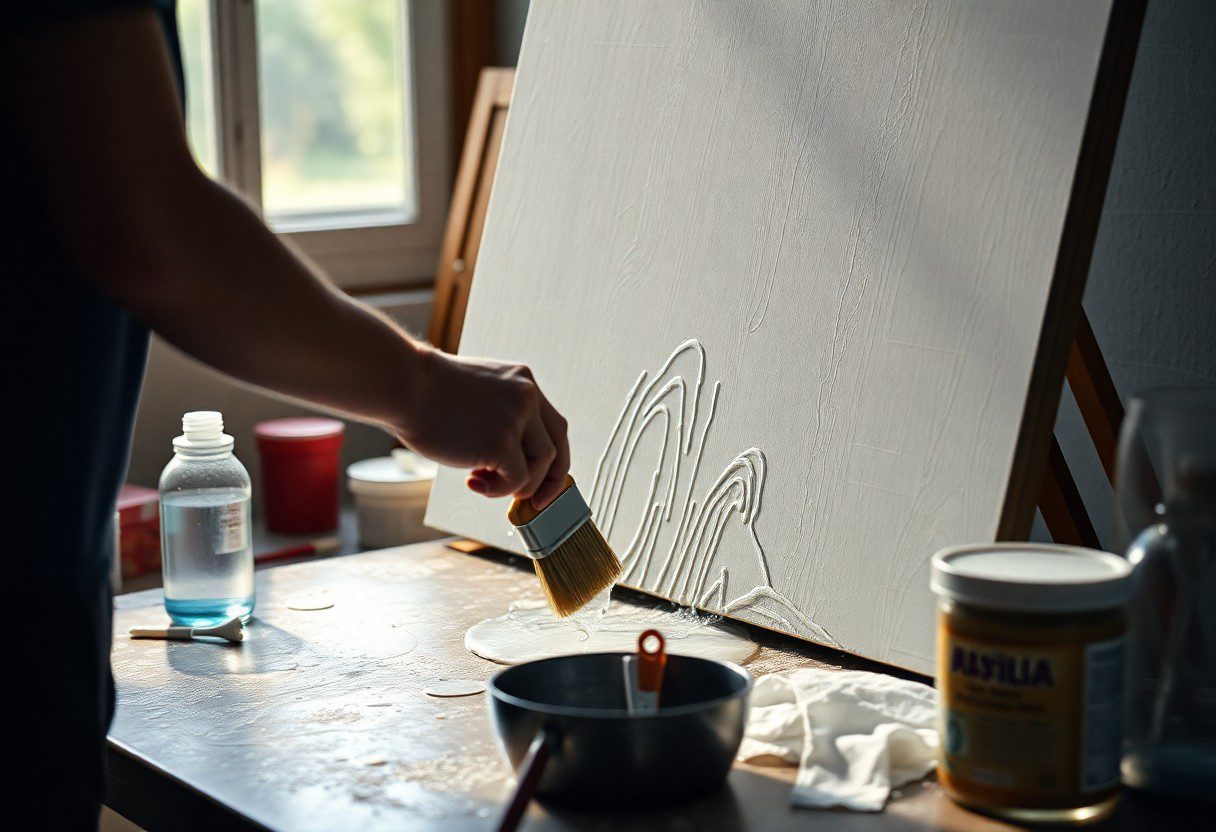Most people love the versatility and style of canvas materials, whether it’s on bags, shoes, or wall art. However, keeping your canvas looking fresh and vibrant can be a challenge. Thankfully, with the right techniques, you can effectively remove dirt and stains without damaging your item. In this guide, you will discover necessary tips and products to ensure your canvas remains in top condition. Make sure to follow these steps to achieve safe and effective cleaning while maintaining the integrity of your beloved canvas pieces.
Understanding Canvas Material
A canvas is a durable fabric often made from cotton or linen, known for its versatility in art and practical applications. Its strength and texture make it an ideal choice for paintings, bags, tents, and an array of other items. Being aware of the unique properties of canvas allows you to choose the right cleaning methods and products to maintain its integrity and appearance.
Types of Canvas
If you’re exploring different kinds of canvas, you might encounter several variations tailored for specific uses. Below are some common types:
| Types | Description |
| Natural Canvas | Made from fibers such as cotton or linen. |
| Polyester Canvas | Made from synthetic fibers, more waterproof. |
| Duck Canvas | A heavier, more durable option. |
| Artists’ Canvas | Specifically prepared for painting. |
| Waterproof Canvas | Coated for increased resistance to water. |
Assume that understanding the type of canvas you have will guide the cleaning process effectively.
Factors Affecting Cleaning
Assuming you’re ready to clean your canvas, several factors can influence the cleaning method you should use. These include, but are not limited to:
- Material type
- Stain severity
- Colorfastness
- Texture and finish
- Environmental exposure
Any oversights in these factors may lead to less than satisfactory cleaning results.
Understanding the factors affecting cleaning can greatly enhance your effectiveness. For instance, if your canvas is made from delicate fibers, using a mild detergent instead of a harsh cleaner is advisable. Additionally, knowing the stain severity can also dictate whether you should spot clean or wash the entire piece. Each cleaning approach should respect the colorfastness of your canvas to avoid discoloration. To ensure proper care, always tailor your cleaning techniques according to the factors impacting your specific canvas item. Any mistakes could lead to unnecessary wear or damage to your belongings.
- Cleaning method
- Drying technique
- Storage conditions
- Usage frequency
- Maintenance routine
To achieve the best cleaning outcomes, consider these additional factors that might come into play. The cleaning method you use can significantly affect your canvas, especially in terms of maintaining shape and color. Similarly, how you dry and store your canvas will influence its lifespan and appearance. Following a consistent maintenance routine can help extend the longevity of your canvas items. Any oversight in these elements can lead to premature deterioration or damage.
Basic Cleaning Techniques
While maintaining your canvas items may seem challenging, using the right cleaning techniques will help you preserve their quality and appearance. Start with simple methods to tackle surface dirt, and progress to more intensive treatments as necessary. Regular cleaning will extend the life of your canvas and keep it looking fresh.
Spot Cleaning
For quick stains or localized dirt, spot cleaning is your best tool. Use a soft cloth or sponge dampened with water and mild soap to gently blot the affected area. Avoid rubbing, as this can cause the stain to spread or damage the fabric.
Deep Cleaning
With deep cleaning, you will address more extensive dirt and grime built up over time. This process involves soaking your canvas in a solution of water and mild detergent for a thorough cleanse. Ensure to rinse well to remove any soap residue that may cause discoloration.
To effectively deep clean your canvas items, always check the manufacturer’s instructions for specific cleaning recommendations. Soak the canvas for at least 30 minutes before scrubbing gently with a soft brush. After rinsing, allow it to air dry completely to prevent mildew. Avoid using harsh chemicals or excessive heat, as they can weaken the fabric and cause fading.
Tools and Supplies Needed
There’s a range of vital tools and supplies you’ll need to effectively clean your canvas. Gather a soft-bristled brush, a microfiber cloth, and a suitable cleaning solution based on your specific canvas type. Having these items on hand will make the cleaning process more efficient and ensure you do not damage the fabric.
Cleaning Solutions
Assuming you’ve identified the type of dirt or stains on your canvas, you’ll want to choose the appropriate cleaning solution. For general cleaning, a mixture of mild soap and water usually works well, while tougher stains may require specialized products designed for canvas. Always test the solution on a small, inconspicuous area first.
Brushes and Cloths
Cloths and brushes play a vital role in the cleaning process. Utilize a soft-bristled brush to gently scrub away dirt without damaging the fibers. Microfiber cloths are ideal for wiping and drawing out moisture swiftly, preventing mold or mildew growth.
Tools such as soft-bristled brushes and microfiber cloths are beneficial for your canvas cleaning efforts. The soft bristles help avoid damage to the fabric while effectively removing debris. Additionally, microfiber cloths are excellent for absorbing moisture and preventing mold or mildew growth, ensuring your canvas stays in great condition throughout the cleaning process.
Tips for Maintaining Clean Canvas
After you have cleaned your canvas, maintaining its cleanliness is vital. To ensure your canvas remains in top condition, consider the following tips:
- Regularly check for dirt and stains.
- Store your canvas in a dry environment.
- Use a protective spray designed for canvas.
- Avoid placing heavy items on your canvas.
Assume that these steps will keep your canvas looking fresh for years to come.
Regular Maintenance
One of the best ways to maintain your canvas is through regular maintenance. This includes inspecting for any buildup of dirt or mildew, as well as removing any stains promptly. Use a soft brush or cloth for gentle cleaning, as harsher tools can damage the fabric. Aim to perform these checks and cleanings every few months to keep your canvas in optimal condition.
Storing Canvas Properly
Maintaining your canvas goes beyond just cleaning—it also involves proper storage. Canvas should be stored in a cool, dry place, away from direct sunlight to prevent fading. Make sure it is rolled rather than folded to avoid creases. Use breathable fabric covers for extra protection. This minimizes the risk of mold and mildew, which can seriously damage your canvas over time. By creating the right environment, you can prolong the life of your beloved canvas.
How to Handle Stains
Now that you understand the basics of cleaning canvas, let’s tackle the issue of stains. Quick action is imperative when dealing with blemishes in order to prevent them from setting. Always start by blotting the stain with a clean cloth to soak up excess liquid, then use the appropriate cleaning method based on the type of stain. This will ensure that your canvas items remain looking fresh and clean.
Common Stains and Remedies
Common stains on canvas include dirt, food, and ink. For dirt marks, simply brush off any loose particles and clean with a damp cloth. For food stains, sprinkle some baking soda on the affected area before gently scrubbing with a soft brush and warm water. For ink stains, dab with rubbing alcohol and blot it clean. Always test any cleaner on a small, hidden area first.
Prevention Tips
To keep your canvas items looking pristine, consider these prevention tips:
- Use a water-resistant spray to add a protective layer to your canvas.
- Avoid placing canvas items in high-traffic areas where they could get scuffed.
- Regularly clean your canvas to prevent buildup of dirt and stains.
After implementing these strategies, you’ll find that maintaining your canvas is much easier.
The secret to successful canvas care lies in consistent preservation efforts. Ensure you keep your canvas items away from ground dirt, and try to use them in clean environments. In addition, frequent cleaning with mild solutions can help protect against deeper stains. Use designated canvas bags for transport, and let them breathe to avoid mildew buildup. After implementing these simple yet effective suggestions, your canvas should remain in fantastic condition for a long time.
Safety Precautions
To ensure a successful cleaning process while protecting yourself and your belongings, always wear protective gear such as gloves and goggles. Consider working in a well-ventilated area to avoid inhaling any fumes from cleaning products. Additionally, check that the cleaning solutions you plan to use are appropriate for your specific canvas type, as some can cause damage. Keep children and pets away from the cleaning area to prevent accidental exposure to chemicals or injuries from tools.
Testing Cleaning Solutions
One effective way to ensure your cleaning solution is safe for your canvas is to perform a patch test in an inconspicuous area. Apply a small amount of your chosen cleaning agent and wait for a few minutes to check for any adverse reactions, such as discoloration or fading. If the area remains unchanged, it’s likely safe to proceed with the full cleaning process on your canvas.
Protecting Surrounding Areas
Any time you clean canvas, it’s important to shield your surrounding areas to prevent stains or damage from cleaning agents. Lay down old towels, drop cloths, or plastic sheets to catch any drips or spills during the cleaning process. This proactive approach helps to preserve the integrity of your floors and furniture while ensuring a more manageable clean-up afterward.
Another method to further protect your surrounding areas is to create a safe workspace by moving any nearby valuable items or furniture away from the cleaning site. By doing this, you not only prevent accidental stains but also minimize the risk of damage to those belongings. You may also want to use painter’s tape to mask off edges and prevent overspray or unintended contact with nearby surfaces. This way, you maintain a tidy and organized cleaning process.
Conclusion
From above, you now have a clear understanding of how to clean your canvas effectively. By following the appropriate steps, such as using mild soap, a soft brush, and lukewarm water, you can maintain the appearance and longevity of your canvas items. Taking the time to implement these cleaning methods will ensure that your canvas remains in excellent condition, freeing it from dirt and stains while preserving its overall integrity. With regular care, your canvas can look vibrant and fresh for years to come.
FAQ About Cleaning Canvas
Q: What materials do I need to clean canvas properly?
A: To clean canvas effectively, gather the following materials: a soft-bristled brush or vacuum with a brush attachment, mild detergent (such as dish soap or laundry detergent), a soft cloth or sponge, water, and a bucket. Optional items include a spray bottle and a white vinegar solution for stains.
Q: Can I machine wash my canvas items?
A: It depends on the type of canvas item. For some items like canvas bags or shoes, machine washing may be safe if the care label permits it. However, for paintings or more delicate canvas materials, hand washing is recommended to avoid damage. Always check the care instructions before proceeding.
Q: How do I remove stains from canvas?
A: To remove stains, first, blot the affected area with a clean cloth to absorb any excess liquid. Then, create a mixture of mild detergent and water. Apply the solution to the stain using a soft cloth or sponge, gently rubbing in a circular motion. For tough stains, a white vinegar solution can also be applied. After treating the stain, rinse with clean water and let the canvas air dry.
Q: Is it safe to use bleach on canvas?
A: Bleach is generally not recommended for cleaning canvas, as it can damage the fabric and discolor the material. Instead, opt for a mild detergent or a specialized canvas cleaner. If you encounter persistent stains, test the chosen product on a small, inconspicuous area first to ensure it will not cause harm.
Q: How do I prevent mold and mildew on my canvas items?
A: To prevent mold and mildew growth, keep canvas items in a dry, well-ventilated area away from direct sunlight. If canvas items become wet, make sure to dry them thoroughly before storing. Regular cleaning also helps, as it removes dirt and moisture that can promote mold growth.
Q: Can I use a pressure washer to clean canvas?
A: Using a pressure washer on canvas is not advisable since the high pressure may damage the fabric or cause it to fray. Instead, opt for gentler cleaning methods such as hand washing with a soft brush or cloth to maintain the integrity of the material.
Q: What should I do if my canvas item shrinks after cleaning?
A: If your canvas item has shrunk after cleaning, gently reshape it while it is still damp and allow it to air dry flat to reduce further distortion. In the future, ensure you’re using appropriate washing methods, water temperatures, and drying techniques to minimize shrinkage risk.




